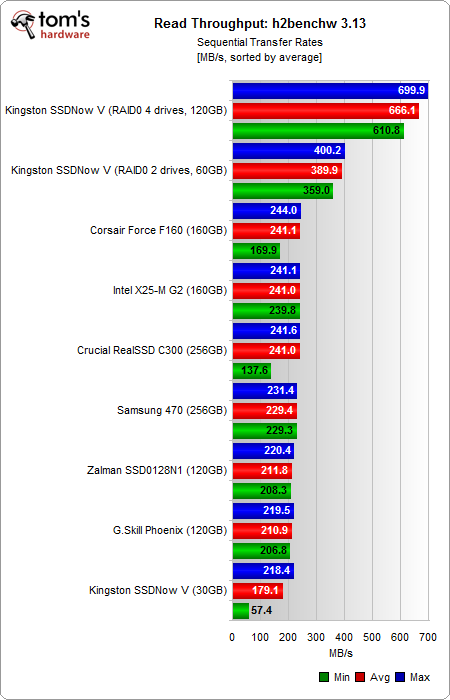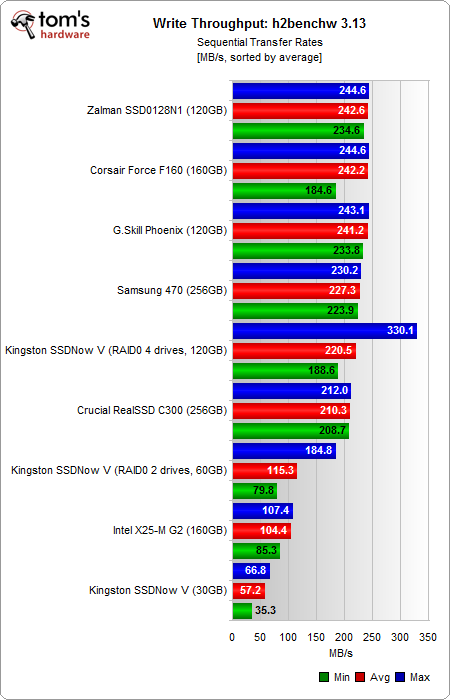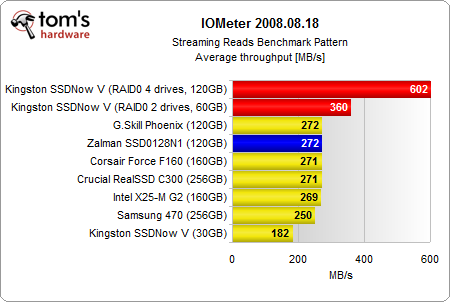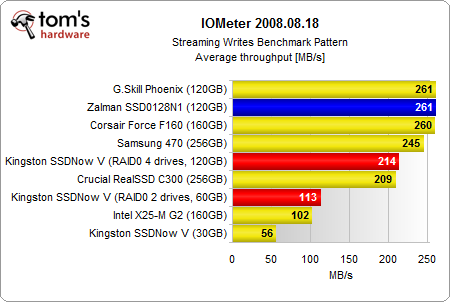SSD RAID: Do You Want A Cheap Array Or One Larger Drive?
You're on a budget. You want to know if it'd be better to stripe a couple of smaller SSDs or simply buy one larger performance-oriented drive. Today we're comparing one, two, and four 30 GB Kingston SSDNow V drives to Zalman’s new 128 GB N-series SSD.
Benchmark Results: Throughput, IOMeter Streaming, CrystalDiskMark
Enthusiasts are probably most interested in this chart. While a single Kingston SSDNow V 30 GB delivers between 218 MB/s and 57 MB/s, an array with two of these drives maintains 400-359 MB/s and four of the Kingston SSDs will give you 699-610 MB/s. We’re looking at a 3.2x improvement for maximum sequential reads and a 10.7x increase for minimum transfer rates. This means that the four-drive RAID array can actually sustain much better minimum performance.
Zalman’s N-series SSD reaches read throughput that is typical for a SandForce drive. You get great performance, but the drive doesn’t break records.
In the write performance test, the four-drive RAID array is the only one to reach 300+ MB/s maximum write throughput. However, the average (and especially the minimum performance) is even below of what you get from the Zalman N-series or other SandForce-based SSDs. Also note that a two-drive Kingston SSDNow V 30 GB array or even the individual drive suffers from slower write performance numbers.
The streaming reads and writes tests by Iometer confirm our h2benchw findings; the same applies to the write tests.
Results: CrystalDiskMark Sequential Reads/Writes
The CrystalDiskMark shows slightly better results for the RAID array. Keep in mind that these results are always only maximum results. Performance drops, which may occur, are not reflected.
Get Tom's Hardware's best news and in-depth reviews, straight to your inbox.
Current page: Benchmark Results: Throughput, IOMeter Streaming, CrystalDiskMark
Prev Page Benchmark Results: Access Time And I/O Performance Next Page Benchmark Results: 4 KB Random Reads/Writes




